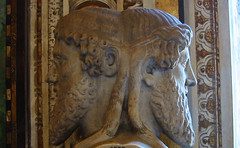
Image by RedJinn: World Peace: What are you doing about it? via Flickr
Published on Nov 21, 2010 Category – Holidays
January one marks the end of a period of remembrance of the passing year for radio, television and newspapers. Publications have year-end articles that review the changes during the past year. The topics include politics, natural disasters, music, arts, the listing of significant individuals and those who died during the past year and many more.
“Happy New Year” that greetings will be said and heard as the New Year approaches. But the day celebrated as New Year’s Day wasn’t always January 1.
During the Middle Age, New Year’s Day was celebrated among Christians usually on March 25 (Roman Calendar).After the adoption of the Gregorian calendar in 1582, the day was observed on the January 1. The Jewish New Year is the first day of Tishri, which falls some time in September or in early October. The Chinese New Year is between January 10 and February 19 of the Gregorian calendar. The Muslim New Year falls on the first day of Muharram. The Muslims will celebrate their New Year for this year on December 7, 2010 – corresponding Arabic calendar Muharram 1, 1432H.
Who is Janus?
The month of January is named for Janus. In Roman mythology, Janus was the god of gates, doors, doorways, beginnings and endings. He was known as Janus Geminus (twin Janus) with two faces looking in opposite directions. The first hour of the day, the first day of the month and the first month of the year bears his name.
Janus is symbolizing the god of change and transitions such as, the progression of past to future, of one condition and of one vision to another. And because Janus symbolizes them, the making of New Year’s resolutions had become a tradition of the season. People begin to think of what they would like to change for the next year. They make resolutions for everything they can think of. And of course, I also did it the same thing as well. Although I asked sometimes in my own language Filipino, “Kailangan bang hintayin pa natin ang pagpalit ng taon, kung may gusto tayong baguhin sa ating mga sarili?”
Janus a Culture Hero
Janus was also worshipped at the beginning of the harvest and planting times, as well as marriages, births and other beginnings. During his reign Janus was the first to announce the golden age. He introduced the important of money, laws and agriculture – that making him a culture hero.
Other names of January
In old Japan calendar, the month January is called Mutsuki. In Finnish it is called Tammikuu – meaning month of the oak.
January 1 marks the end of a period of remembrance of the passing year for radio, television and newspapers. Publications have year-end articles that review the changes during the past year. The topics include politics, natural disasters, music, arts, the listing of significant individuals and those who died during the past year and many more.
Circumcision of Jesus
Also January 1 for the Roman Catholic and Aglican churches is the feast day celebrating the circumcision of Jesus, who is believed by all Christians the Savior and the Redeemer of human race and the world.
As for me January is the beginning of the twelve months cycle. Happy returns of the month!
Full Story New Year’s Day is Not Always January One


No comments:
Post a Comment